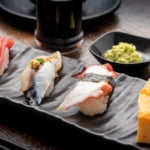Name: The Miracle Lone Pine Tree
Address: 176-6 Sunamori, Kesen-cho, Rikuzentakata City, Iwate Prefecture
Official/Related Website: https://www.city.rikuzentakata.iwate.jp/soshiki/tochikatsuyosuishinka/toshikeikakukakari/2_1/2914.html
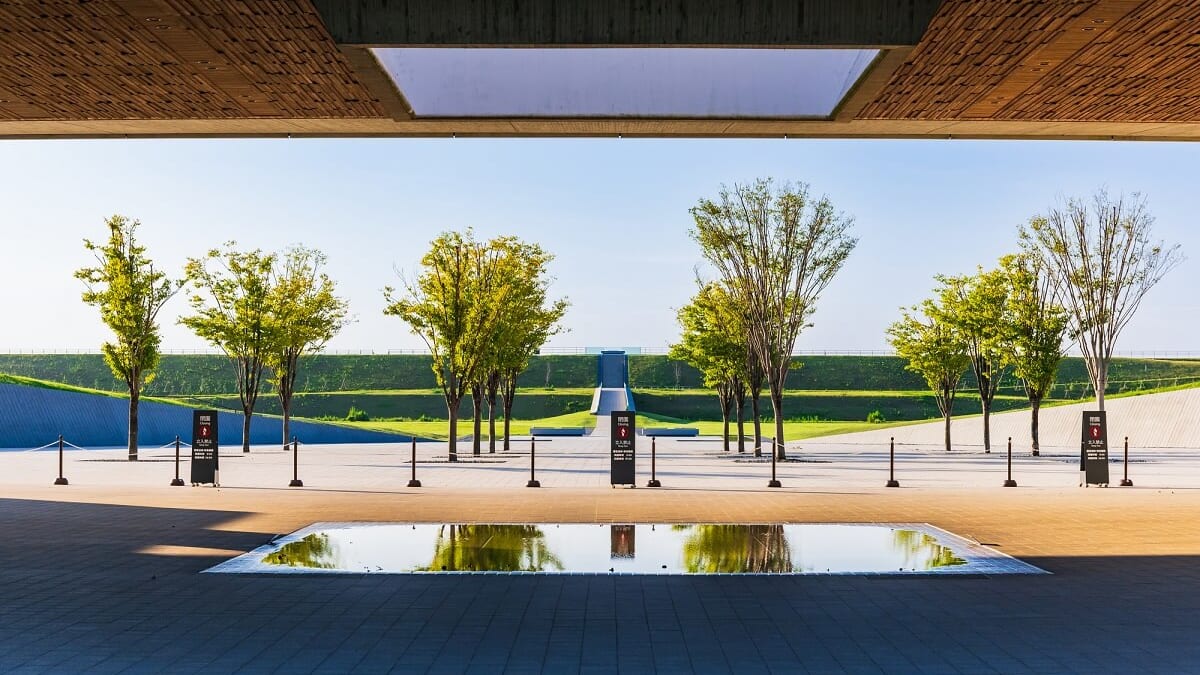
5 Must-Visit Tourist Spots in Rikuzentakata City!
When people think of Rikuzentakata City, the first things that come to mind are fresh oysters and scallops, which are highly popular among tourists. Additionally, the area is known for the cultivation of high-quality wakame seaweed and kombu, both of which have an excellent reputation. Rikuzentakata is also home to a thriving wood industry using Kesennuma cedar (Kesen-sugi), a local specialty. The city continuously seeks new challenges, such as developing tourist attractions that highlight both its seafood and its renowned cedar wood products.
As for sightseeing, Rikuzentakata boasts some of Iwate Prefecture’s most remarkable natural monuments, historical sites, and both tangible and intangible cultural heritage. This rich blend of nature, history, and culture makes it a truly fascinating destination.
Below, we introduce some of the best places to visit in Rikuzentakata City, where you can experience its breathtaking nature, deep history, and cultural charm.
table of contents
[x] close
1. The Miracle Lone Pine Tree
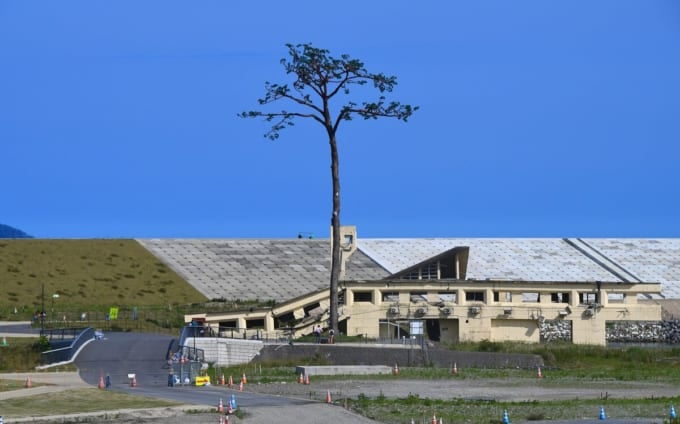
When it comes to Rikuzentakata City, one of its most well-known and beloved landmarks is the Miracle Lone Pine Tree—a symbol of resilience and recovery that continues to inspire hope among many. It is one of the most famous and popular tourist spots in Rikuzentakata.
This area, known as Takata Matsubara, was once a thriving beach destination, admired for its beautiful sandy shores, while its pine forest served as a relaxing retreat for local residents. However, the 2011 Great East Japan Earthquake and Tsunami devastated the area, washing away the entire pine grove—except for a single pine tree that miraculously remained standing. This lone survivor became a symbol of hope and strength, drawing countless visitors who wish to witness its inspiring presence.
Unfortunately, the tree ultimately withered due to prolonged exposure to seawater. However, it has been preserved as a monument, with its trunk treated for preservation and its branches and leaves replicated to retain its original appearance.
The Miracle Lone Pine Tree is illuminated from sunset until around 9:00 PM. However, the path leading to the tree is unlit, so if you plan to visit after dark, it is recommended to bring a flashlight.
2. Local Gourmet Specialty: "Hotawaka Gozen" (Grilled Scallop & Wakame Shabu-Shabu Set Meal)
Trying local gourmet dishes is one of the greatest pleasures of traveling, and Rikuzentakata City is famous for its abundant seafood. In 2014, a special dish was developed to promote tourism—the "Hotawaka Gozen", also known as the Grilled Scallop & Wakame Shabu-Shabu Set Meal. It officially debuted after a year and a half of development and has since become a popular specialty dish.
The Hotawaka Gozen is a unique dining experience where fresh wakame seaweed is enjoyed shabu-shabu style. The meal includes freshly cooked rice made from the renowned local brand "Takata no Yume", and a special three-tier serving tray made from Kesennuma cedar, featuring live scallop sashimi, grilled scallops, and scallop tempura.
Currently, this revitalization gourmet dish is available at four restaurants in Rikuzentakata City.
While there are specific guidelines for preparing the dish—such as using a designated amount of scallops, wakame, and Takata no Yume rice—each restaurant adds its own unique twist, making it an exciting experience to compare different flavors. If you're visiting Rikuzentakata, Hotawaka Gozen is a must-try dish!
Name: Hotawaka Gozen (Grilled Scallop & Wakame Shabu-Shabu Set Meal)
Official/Related Website: https://takanavi.org/hotatewakame/
3. Kesen Daiku & Plastering Traditional Museum
Kesen Daiku is known as one of Japan’s four great master carpenter traditions. Originating in Otomo Town, Rikuzentakata City, Kesen Daiku is famous for its exceptional craftsmanship, and the Kesen Daiku & Plastering Traditional Museum was established to preserve and showcase this incredible art form for future generations.
The museum building itself is designed to reflect a Meiji-era house, and all materials used in its construction, including thatched roofs and storehouse-style structures, are sourced locally from Rikuzentakata's Kesennuma cedar. The site also features exhibits on traditional carpentry and plastering techniques, allowing visitors to see the exquisite craftsmanship of Kesen Daiku and plaster artisans. At the irori hearth, visitors can listen to stories about Kesen Daiku history and the daily life of craftsmen—told in the local Kesen dialect by museum staff. This adds an authentic cultural experience to your Rikuzentakata tour.
Name: Kesen Daiku & Plastering Traditional Museum
Address: 1-237 Myoga, Otomo Town, Rikuzentakata City, Iwate Prefecture
Official/Related Website: https://iwatetabi.jp/spot/detail.spn.php?spot_id=73
4. Kaiganzan Fumonji Temple
Rikuzentakata City is home to many designated cultural properties of Iwate Prefecture, including Kaiganzan Fumonji Temple, founded in 1241. The temple complex houses a three-story pagoda, a wooden statue of Kannon (the Bodhisattva of Compassion), and silk paintings of the Aizen Myo-o deity, making it one of the city's most significant historical landmarks.
The three-story pagoda, standing at approximately 12.5 meters, is recognized for its high cultural and historical value. The intricately carved details on its delicate yet elegant structure make it a must-see attraction.
The temple grounds are also filled with ancient trees, seasonal flowers, and the sacred "Sarusuberi" (Crape Myrtle) tree, providing visitors with a serene and picturesque experience.
Another key attraction is the "500 Rakan" stone statues, which have been created in various places across Japan to commemorate and honor the deceased. Since 2013, Fumonji Temple has been holding a "500 Rakan Creation Meeting", allowing people to participate in this tradition. Having survived the 2011 earthquake, Fumonji Temple has also become a place of remembrance and prayer.
Name: Kaiganzan Fumonji Temple
Address: 181 Jichikuzawa, Yonezaki Town, Rikuzentakata City, Iwate Prefecture
Official/Related Website: https://fumonji-iwate.jp/
5. Kurosaki Senkyo Onsen
Located in the Hirota Town area of Rikuzentakata, Kurosaki Senkyo Onsen is a day-use hot spring and dining facility that overlooks both the Pacific Ocean and Hirota Bay. Visitors can enjoy soaking in an ocean-facing hot spring bath, as well as indulge in fresh seafood dishes made with locally caught fish and wakame seaweed—a perfect way to relax during a trip to Rikuzentakata.
A five-minute walk from the onsen leads to the Sanriku Fukko National Park, a spectacular location featuring majestic coastal landscapes carved by the sea. Visitors can also enjoy a panoramic ocean view from an observation deck while exploring the scenic walking trails.
Another unique sight nearby is the "Kurosaki Senkyo" rock formation, considered one of Rikuzentakata’s spiritual sites. On the third day of the third lunar month, during low tide, it is said that mysterious "Kagura-like" sounds can be heard coming from the sea caves. If you visit during this time, be sure to listen closely!
Name: Kurosaki Senkyo Onsen
Address: 9-41 Kurosaki, Hirota Town, Rikuzentakata City, Iwate Prefecture
Official/Related Website: https://kurosaki-onsen.com/index.php
◎ Summary
Rikuzentakata City has many diverse and fascinating attractions. While it is often associated with the sea, approximately 80% of the city's land area is covered by lush forests, featuring natural monuments such as pines, zelkova, and maples.
Beyond the five recommended spots, the city also has intangible cultural heritage such as the "Tiger Dance" and traditional festivals. Additionally, seasonal scenery such as spring cherry blossoms, autumn foliage, and breathtaking waterfalls further enhances its charm. With its blend of tranquil landscapes and historical depth, Rikuzentakata offers a truly unique and enriching travel experience.
Why not visit and discover its beauty for yourself?
RELATED ARTICLES
REGIONS
CATEGORIES
FEATURED ON Iwate
-
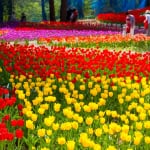
5 Recommended Tourist Spots in Karumai Town, Iwate Prefecture – Enjoy Nature!
-
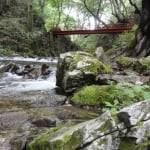
Let’s be healed by the magnificent nature that Iwate is proud of! 4 Recommended Power Spots in Iwate Prefecture
-

[2025] Enjoy Illuminations and Ice Caves at Mahora Iwate’s “World of Ice”!
-
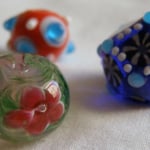
6 Must-Try Experience Spots You Should Visit in Iwate
-
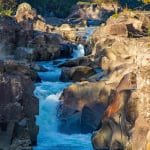
[3-Day Autumn Weekend] Must-Visit Destinations in Japan This September – Avoid the Crowds!
MOST POPULAR ON Iwate
-
 1
1Doha: Must-see Attractions in the Capital of Qatar
-
 2
2Toronto: 10 Things to do in this Picturesque Canadian City
-
 3
3Amarillo: A City Famous for It’s Amazing Canyons, Great History and Music
-
 4
4South Korea: Dazzling Scenery, Rich Culture and Fascinating History
-
 5
5Kuwait: A Country in Middle East Asia Famous for Hot Sand Dunes and Stunning Cityscape

